Moving to a new home is an adventure, a fresh start that opens the door to new possibilities and experiences. However, before you can settle into your new space and start making memories, there’s a significant hurdle to overcome: packing and moving your belongings. This process, often seen as daunting and stressful, can actually be transformed into an organized and efficient experience with the right approach and mindset.
The key to a successful move lies in smart packing. It’s not just about throwing your items into boxes but about strategically planning and executing the packing process. Efficient packing ensures that your belongings are not only safe and secure during the move but also easily accessible and organized when you arrive at your new home. This guide aims to simplify the packing process, making your move as stress-free as possible.
In this blog, we’ll cover:
- Decluttering and Planning: Quick tips for a smooth start.
- Packing Supplies: What you need and how to use them effectively.
- Packing Techniques: Easy steps to pack different items securely.
- Moving Day Logistics: Simplifying the big day.
- Unpacking in Your New Home: Settling in with ease.
So, let’s embark on this packing journey together. With a little planning, organization, and the right techniques, you’ll find that packing can be a manageable, even enjoyable, part of your moving adventure. Say goodbye to the chaos and hello to a smooth, organized move!
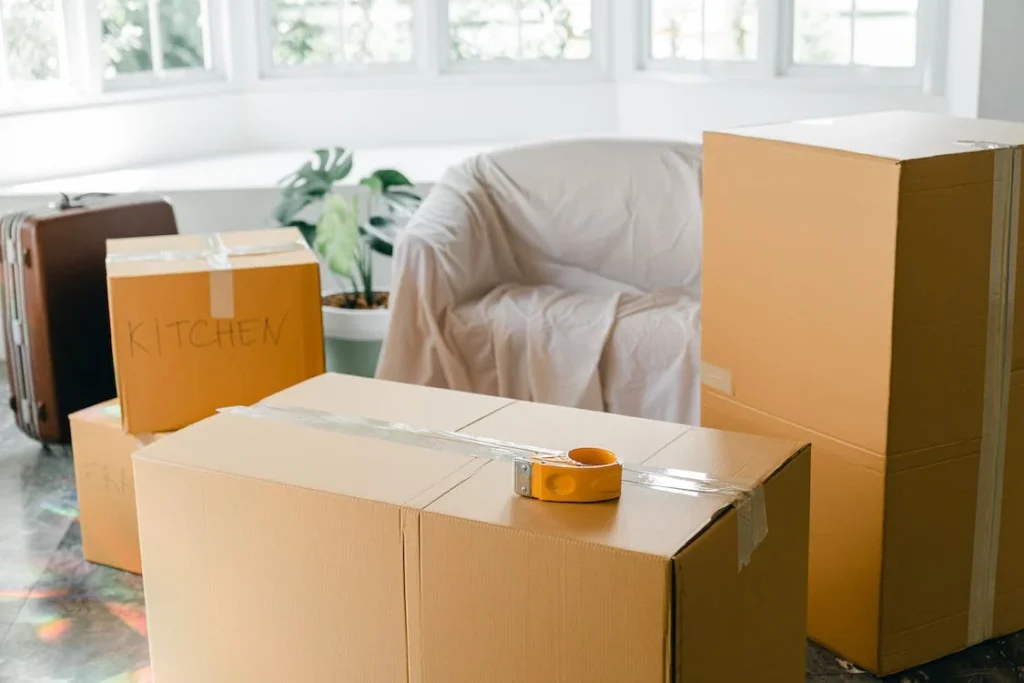
The Pre-Packing Phase: Setting the Stage for Success
Decluttering Essentials
The journey to an efficient move begins long before the first box is sealed. It starts with decluttering – a critical step that not only simplifies your packing process but also lightens your load, both physically and emotionally. Decluttering involves a thorough assessment of your belongings, where you decide what to keep, sell, donate, or discard.
Start this process early, ideally several weeks before your move. Tackle one room at a time to avoid feeling overwhelmed. As you sift through your items, ask yourself: When was the last time I used this? Does it hold significant sentimental value? Is it essential for my new home? This reflection helps in making objective decisions about what stays and what goes.
Create four categories: keep, sell, donate, and discard. Items in good condition that you no longer need can be sold online or through a garage sale, generating extra funds for your move. Donating to local charities or giving away to friends and family can also be fulfilling. Remember, the less you have to pack, the easier your move will be.
Creating a Packing Plan
With decluttering out of the way, it’s time to strategize your packing. A well-thought-out packing plan saves time and prevents chaos during the move. Begin by creating a detailed checklist of all items you plan to take along. Organize this list by room – it will serve as a roadmap, guiding you on what to pack and when.
Prioritize items based on their necessity. Pack non-essential items first, like out-of-season clothing and decorative pieces, and save daily use items for last. This approach ensures you’re not rummaging through packed boxes for something you need before the move.
For each room, consider the layout and storage space in your new home. This foresight aids in deciding what to pack and the order of packing. For instance, if your new living room is smaller, you might want to pack and move only essential furniture pieces.
Labeling is crucial in this phase. Clearly mark each box with its contents and the destination room in your new home. This practice not only aids in efficient unpacking but also helps movers place boxes in the correct rooms, saving you time and effort.
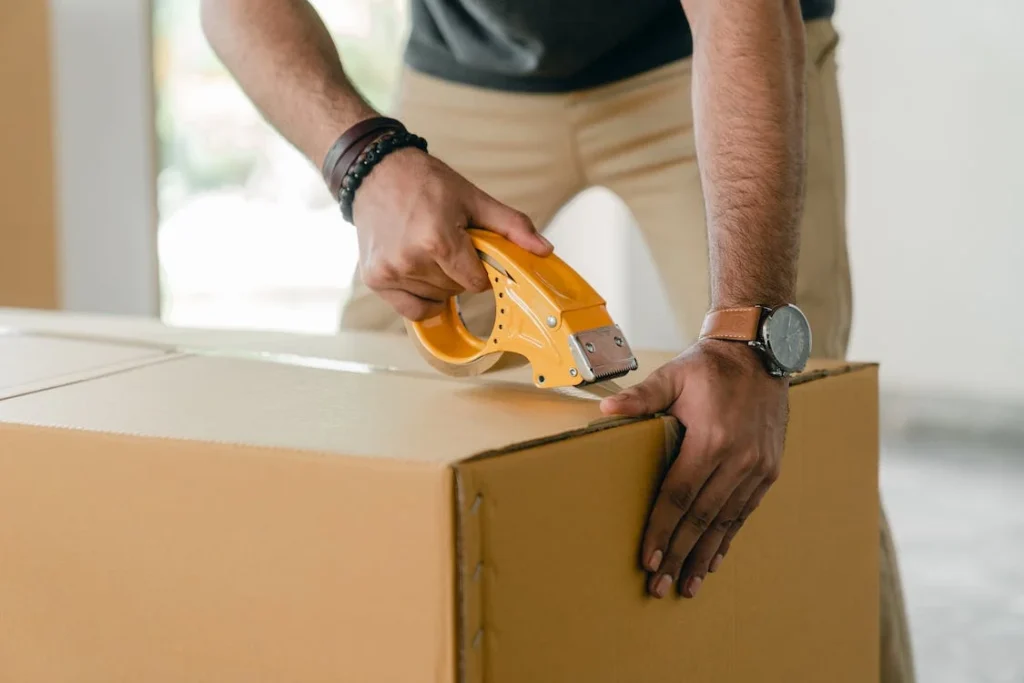
Gathering Your Packing Arsenal
Choosing the Right Supplies
A successful packing experience hinges on having the right tools and materials at your disposal. The cornerstone of these are moving boxes, which come in various sizes. Small boxes are ideal for heavy items like books, while larger ones are perfect for lighter, bulkier items like linens. For delicate electronics or dishes, consider specialty boxes with extra padding.
Next, stock up on protective packing materials. Bubble wrap and packing peanuts are indispensable for safeguarding fragile items. Packing paper and plastic wrap can protect surfaces and prevent items from shifting. Don’t forget sturdy packing tape – a key player in securing your boxes.
Tools of the Trade
In addition to boxes and protective materials, a few tools can significantly ease the packing process. Scissors or a box cutter are essential for cutting tape and shaping packing materials. Permanent markers are crucial for labeling, and color-coded labels can streamline the unpacking process by indicating which room each box belongs to.
Furniture covers and blankets offer an extra layer of protection for your larger items, shielding them from scratches and dents. Lastly, keep cleaning supplies handy. Packing often reveals hidden dust and dirt, and a quick clean-up can ensure your items are packed in pristine condition.
You can purchase these supplies from moving companies or hardware stores. For a more budget-friendly option, consider asking local businesses for spare boxes or searching online marketplaces.
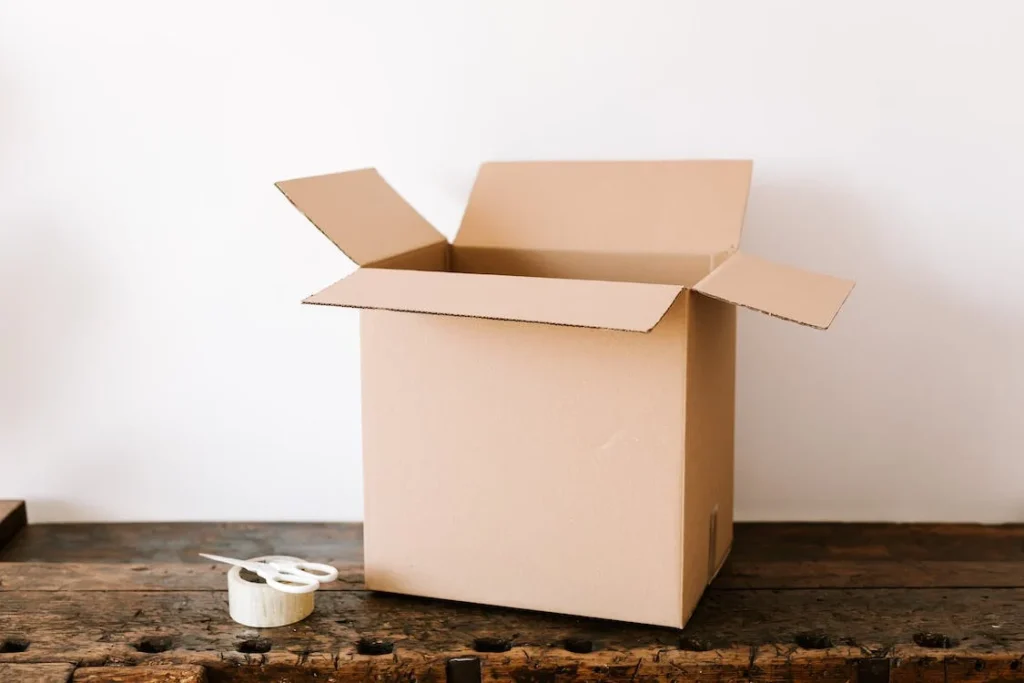
Packing Techniques for Different Items
Fragile and Valuable Items
Packing fragile items demands meticulous care. Start by wrapping each piece individually in bubble wrap or packing paper. For extra delicate items like china or glassware, consider double wrapping. Use sturdy boxes and place heavier items at the bottom, adding lighter ones on top. Fill any gaps with crumpled packing paper or foam peanuts to prevent movement during transit. Clearly label these boxes as ‘Fragile’ to ensure careful handling.
Clothing and Linens
Efficiently packing clothes and linens can save significant space. Wardrobe boxes are excellent for hanging clothes, keeping them wrinkle-free. For folded garments, vacuum-sealed bags are a space-saving miracle, especially for bulky items like winter coats or comforters. Use suitcases for an eco-friendly approach to pack clothes – they’re sturdy and easy to transport.
Books and Heavy Items
Books should be packed in small, sturdy boxes to manage weight. Pack them flat or with the spine down to prevent damage. For other heavy items, distribute the weight evenly and avoid overfilling boxes. Reinforce the bottom of these boxes with extra tape for added security.
Large Furniture and Appliances
Disassemble furniture where possible to save space and prevent damage. Wrap pieces in moving blankets or bubble wrap, paying special attention to corners and delicate areas. For appliances, ensure they are clean and dry before packing. Secure doors and removable parts to prevent them from opening or getting lost.

Labeling and Inventory Management
Effective Labeling Strategies
Proper labeling is more than just a time-saver; it’s a stress-reducer. Each box should be clearly marked with its contents and the destination room in your new home. Consider using color-coded labels or stickers for an added layer of organization – for instance, blue for the bathroom, green for the kitchen, etc. This visual system not only aids you but also helps movers understand exactly where to place each box.
Maintaining an Inventory
An inventory is your moving day cheat sheet. It keeps track of what you’ve packed and helps ensure nothing gets lost in transit. Number each box and keep a detailed list of its contents. This can be as simple as a notebook or as sophisticated as a digital spreadsheet. The inventory is particularly useful for insurance purposes, should anything be damaged or go missing.
For high-value items, take photos before packing them. This provides a visual record and can be helpful if you need to file an insurance claim. Keep your inventory list in an easily accessible place, like a designated moving folder or a digital file on your phone.
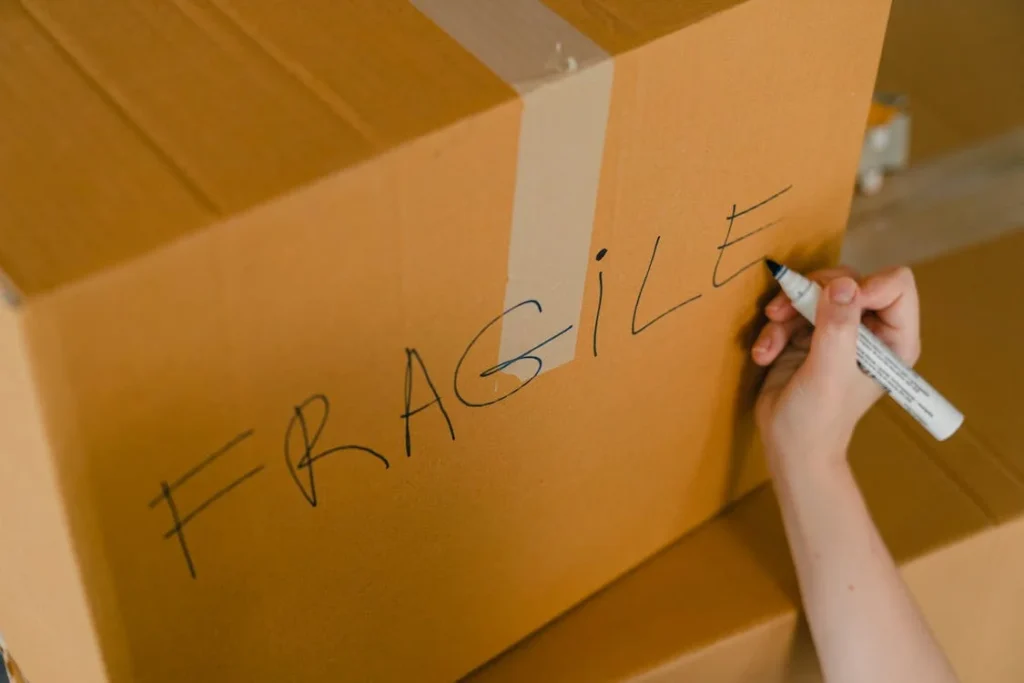
Loading and Transportation Tips
Efficient Loading Techniques
Loading your moving truck or container correctly is vital for the safety of your belongings. Start by placing the heaviest items, like furniture and appliances, towards the front of the truck. This helps balance the weight and keeps the truck stable on the road. Distribute the weight evenly on both sides to prevent shifting.
Next, fill in with medium-sized and lighter boxes, placing the heaviest boxes on the bottom and lighter ones on top. Fragile items should be loaded last and positioned so they won’t move around during transport. Use moving blankets and straps to secure items and prevent damage.
Transportation Considerations
If you’re driving the moving truck, be mindful of the increased size and weight. Drive slower than usual, allow for more stopping distance, and be cautious on turns. If you’ve hired movers, ensure they have clear directions to your new home and a contact number to reach you.
Before the move, check your insurance coverage. Your homeowner’s insurance or moving company may offer coverage for your belongings during transit. It’s worth considering additional moving insurance for peace of mind, especially for long-distance moves.
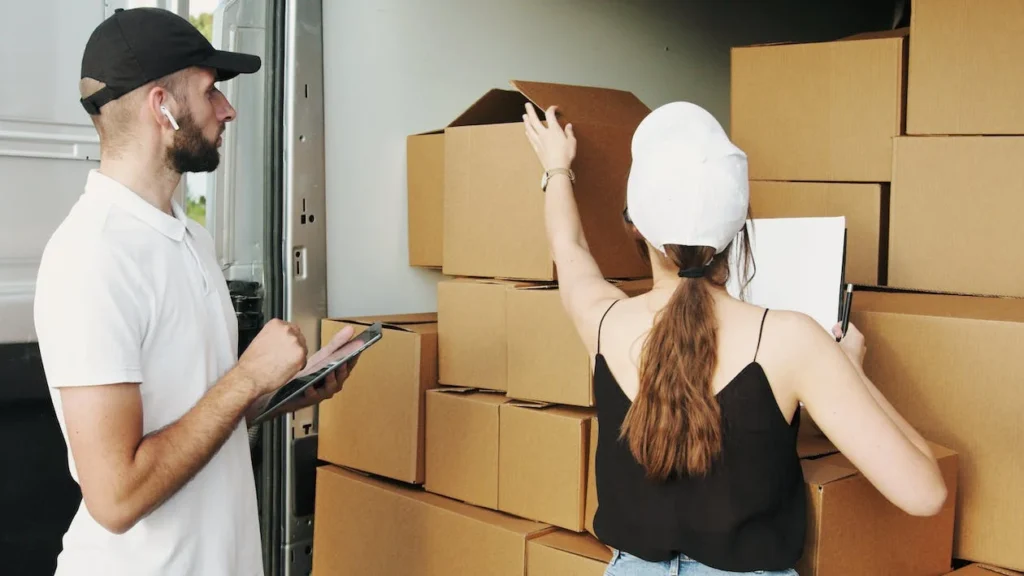
The Unpacking Phase: Settling into Your New Space
Unpacking Strategy
Unpacking can be as daunting as packing, but with a strategy in place, it becomes a manageable and even enjoyable task. Start by unloading and unpacking the essentials – toiletries, basic kitchen supplies, and a change of clothes. This allows you to maintain a semblance of normalcy as you settle in.
Tackle one room at a time, beginning with the most frequently used spaces like the kitchen and bathroom. This focused approach prevents the process from becoming overwhelming and helps you see progress more quickly. Unpack items in the order of their necessity, setting up beds and major appliances early on to make your new place feel like home.
Organizing as You Unpack
Unpacking is an opportunity to organize your new home efficiently. As you unpack each box, think about the best place for each item. This might be a great time to set up organizational systems that you wished for in your previous home – be it shelf organizers in the kitchen or a new filing system for your home office.
Remember, you don’t have to unpack everything in one day or even one week. Take your time to thoughtfully place your belongings. This mindful approach not only reduces stress but also results in a more organized and pleasant living space.

Professional Packing Services: When to Consider
Advantages of Professional Help
While DIY packing can be cost-effective, there are situations where professional packing services are invaluable. If you’re short on time, facing a last-minute move, or have a large number of delicate items like antiques or art, professionals can be a lifesaver. They bring expertise, efficiency, and the right materials to handle your belongings with care.
Professional packers are particularly beneficial for international or cross-country moves where packing needs meet strict guidelines or involve complex logistics. They ensure that your items are packed securely for long journeys and different handling stages.
Choosing the Right Service
Selecting the right packing service requires research and diligence. Look for companies with positive reviews, a good track record, and transparent pricing. Don’t hesitate to ask for references or proof of insurance and licensing. It’s also important to get a clear understanding of what their service covers. Do they provide materials? Will they disassemble and reassemble furniture?
Get quotes from multiple services to compare prices, but remember, the cheapest option isn’t always the best. Consider the value of your time and peace of mind. A reputable service might cost more, but the quality and reliability they offer can be worth the extra expense.
Ready for Your Move? Let A#1 Movers Simplify Your Transition!
Moving to a new home is a significant life event, and while it can be challenging, it’s also an opportunity for a fresh start. With the tips and advice from this guide, you’re now better prepared to ensure that your belongings are packed safely, transported securely, and set up in your new home with ease.
Remember, take your time, stay organized, and don’t hesitate to ask for help when needed. Whether you’re moving across town or across the country, these strategies will help make your transition smoother and less stressful.
As you embark on your moving journey, remember that you’re not alone. If you’re in the Dallas area and looking for professional, reliable assistance, A#1 Movers is here to help. Our team of experienced movers understands the challenges and nuances of relocating. We’re committed to making your move as smooth and stress-free as possible.
Whether you need full-service packing, transportation, or just some expert advice, A#1 Movers offers a range of services tailored to your unique moving needs. Our dedication to customer satisfaction and our meticulous attention to detail set us apart. We handle your belongings with the utmost care, ensuring they arrive safely and securely at your new home. Don’t let the stress of moving overshadow the excitement of your new beginning. Contact A#1 Movers today, and let us take the weight off your shoulders. Visit our website or give us a call to schedule your move and experience a seamless transition with Dallas’s trusted moving experts.
